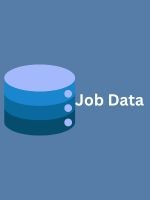B2B (Business-to-Business) marketing describes those marketing practices, tactics and strategies that characterize the relationship between companies whose target audience is other companies and their professionals . Mailchimp, Semrush , a company selling professional products for hair salons or a transport operator for companies, would be some of those brands that would require not just a marketing strategy, but specifically a B2B marketing strategy.
What is B2B marketing and how is it different from B2C?
There are many peculiarities in the way of attracting, nurturing and retaining professional audiences. Because, although we are all users and end consumers in our way of relating to brands, the truth is that the type of touch points and sales cycle in Business-to-Business has nothing to do with the massive B2C or Business-to-Consumer . Let’s start by listing the main characteristics that make the difference in B2B marketing:
To begin with, in B2B we are talking about much longer sales cycles than in B2C, ranging from 6 months to a year and in which multiple decision makers may interact .
Although brand awareness and experiential/emotional value can also play in favor of B2B businesses when it comes to influencing sales closing, the truth is that professional audiences are guided much more by logic and necessity . Professional users are more interested in time, money and the efficiency of their resources.
B2B audiences tend to be much more informed about their sector
They are experts in an area and therefore look for more than just an attractive product. The content and value that a brand can provide with it is crucial not only for attracting B2B audiences, but for their retention and loyalty.
10 B2B Marketing Figures to Better Understand How It Works
46% of B2B companies plan to increase their budget dedicated to content marketing in the next 6 months (Statista)
Content is the basic pillar of any B2B business. It is not only capable of attracting qualified audiences, but also of nurturing and retaining them. Many B2B buyers find businesses to be a much more valuable source of professional learning than any product offering and therefore, it can become a crucial element in the purchasing buy telemarketing data decision process. The important thing, as Isabel Cabrero from Belvo highlighted in a webinar on content marketing in B2B that we organised with her, is to have a well-defined content strategy and objectives.
97% of B2B Marketers use LinkedIn
Their primary content distribution survival guide for the inbound event! tool to reach their audience (Content Marketing Institute )
LinkedIn is the platform that has become the saudi data essential channel for many B2B businesses. Not only does it have the largest professional network of users in the world, but in recent years it has been incorporating various content formats, both organic and paid , which are of great help in impacting B2B audiences at different levels.
One of LinkedIn’s goals is to keep users on the same platform, and although this does not benefit the goal of moving users to a website, it is true that there are multiple alternatives to capture the interest of your users, report on your products and services, and generate leads. From LinkedIn InMail, sponsored posts, to leadgen forms, there are many paid alternatives that you can play with in your acquisition strategy . And if you also know how to combine them with an organic distribution of your content, success will be guaranteed on this platform.
BurstHow to use LinkedIn as a lead generation tool?
Read more
Live Events are one of the most recent formulas that LinkedIn has launched with the aim of getting companies to start broadcasting events directly within the same platform. After the start of the pandemic, virtual events have flooded the Internet and these Live Chats are an easy and effective way to reach the B2B public.

